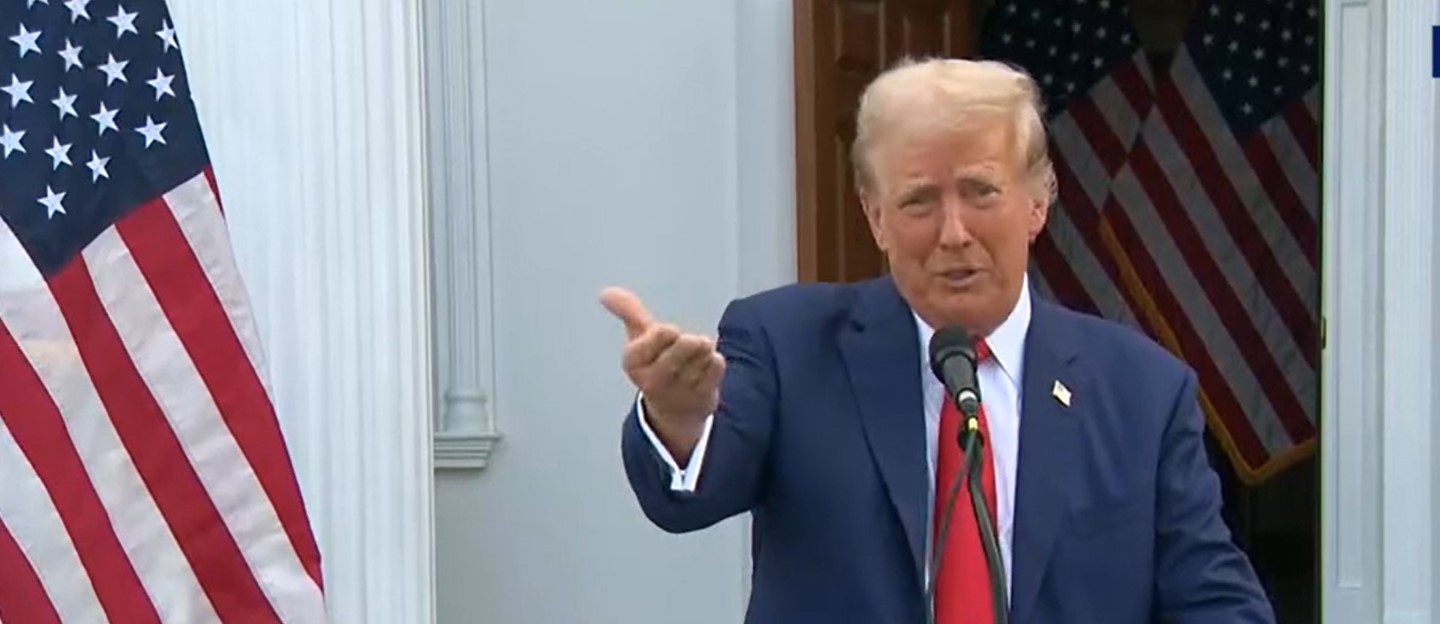Uncategorized
JAMES CARTER AND JIM ELLIS: Trump Needs A Rebound Strategy

Screen Capture/CSPAN
With polling showing a surge for Vice President Kamala Harris that now puts her into a relatively undisputed lead over former President Donald Trump, the latter’s campaign team must create a rebound strategy.
The plan will most likely revolve around painting Harris and Minnesota Gov. Tim Walz as the most extreme leftward presidential ticket America has ever seen and convincing voters that electing the pair would be disastrous for the country. But how to effectively communicate such a message has so far proven elusive.
The nut appears hard to crack. Keep in mind that between 60% and 70% of people in every national poll believe the country is on the wrong track, yet those same respondents by and large still support every incumbent.
It will be interesting to see if the neighborly socialist ticket — inspired by Walz’s recent comment that “one man’s socialism is another man’s neighborliness” — can convince a majority of voters that Harris and Walz are the best team to lead the country for the next four years.
While Trump may have his challenges in developing a resonating message, the Democrats also have a difficult task. They must find a way to sell a presidential candidate who has changed her position on many issues that she has so ardently articulated over the past 20 years and convince the voting public that she is legitimately embarking on a new, more centrist path.
Let’s now focus upon the political map. Traditionally, the media often highlights three crucial Great Lakes states, Michigan, Pennsylvania, and Wisconsin, and professes that the election will ultimately come down to how people in this trio vote. In actuality, three other states are potentially more important to the eventual outcome and certainly to the Trump strategy.
Using the 2020 results map as our basis, Trump must convert states that contain a minimum of 35 electoral votes from places that voted for Joe Biden in 2020. This assumes the Republican nominee again carries the 25 states and the 2nd congressional district of Maine that have twice voted for him. Of that group, North Carolina is Trump’s weakest domain, and the Harris-Walz campaign will make an aggressive move to capture the Tar Heel State.
Assuming the Trump campaign succeeds in North Carolina, the three top priority states then become Arizona, Georgia and Nevada. Before Harris replaced President Joe Biden as the presumptive nominee, Trump never trailed in any of the 70 publicly released cumulative polls in states places since January 1. He led Biden in 69 of the surveys and tied him once in Nevada.
If Trump captures Arizona, Georgia, and Nevada he adds 33 electoral votes to his total, or two short of absolute victory and one from a tie. Doing so means that any other state flipping to Trump would award him the presidency, and all the pressure then reverts to the Harris-Walz campaign.
This means the Democratic team would have to run the table of the remaining battleground states, including Michigan, Pennsylvania, and Wisconsin, while keeping tangentially competitive states such as New Hampshire, New Mexico, Virginia and the Nebraska’s 2nd congressional district in the Democratic column. (And remember, Nebraska’s 2nd congressional district is now more Republican since the 2021 redistricting.)
Now, consider the economic outlook. Most economists expect the U.S. economy will slow considerably in the months leading up to the November election. Wells Fargo, for example, forecasts the annualized GDP growth rate will slow from 2.8 percent in Q2 to 2.1 percent in Q3 and 1.3 percent in Q4.
A 1.3% growth rate isn’t quite a recession, but it’s on the verge.
As the economy slows, Wells Fargo anticipates net monthly job creation will fall to 105,000 net new jobs per month in Q4 from 267,000 in Q1 2024 — that’s a reduction of 61%.
The labor market has already started to soften. The number of unemployed Americans in July was up 637,000 from a year ago. If Wells Fargo’s forecast is accurate, an additional 333,000 or so Americans will be unemployed by Q4.
Meanwhile, net job creation, as measured by the Bureau of Labor Statistics’ Establishment Survey, fell to a disappointing 114,000 in July. What followed was a slew of media headlines warning of a potential recession. Those headlines certainly didn’t fit into Harris’ campaign narrative.
It’s no wonder, then, that according to Gallup, 70% of Americans believe the economy is worsening (24% believe it is improving.) Moreover, a plurality (46%) believe the economy is in “poor” shape. That’s up from 33% when Biden and Harris assumed office in January 2021.
An economic slowdown. A steep fall in job creation. Rising unemployment. The timing of these emerging developments could hardly be worse for the Harris-Walz campaign.
Considering that a swing of 42,922 votes would have shifted Arizona, Georgia, and Wisconsin — and, with those states, the presidency — to Trump in November 2020, the foreboding economic outlook and the Trump effort to unmask Harris and Walz for the radical leftists they are ought to concern Democrats.
Trump’s rebound is emergent, assuming the campaign strategists can strike the right chord in communicating their message.
James Carter was a Deputy Undersecretary of Labor and Deputy Assistant Secretary of the Treasury under President George W. Bush. Jim Ellis is the founder of the Ellis Insight election analysis service.
The views and opinions expressed in this commentary are those of the author and do not reflect the official position of the Daily Caller News Foundation.
All content created by the Daily Caller News Foundation, an independent and nonpartisan newswire service, is available without charge to any legitimate news publisher that can provide a large audience. All republished articles must include our logo, our reporter’s byline and their DCNF affiliation. For any questions about our guidelines or partnering with us, please contact [email protected].

